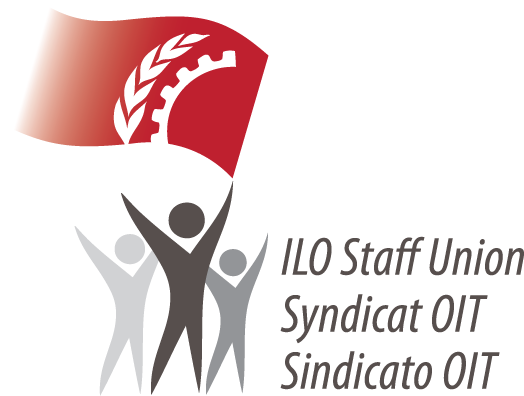Before Versailles: the genesis of the ILO 1 By David A. Morse, Director-General 1948-1970
Category : Centenary - Testimonials
Let me begin with the Paris Peace Conference, which assembled in January 1919, two months after the armistice, which put an end to hostilities in the First World War.
At one of the first sessions, the Conference set up a Commission on International Labor Legislation, of which Samuel Gompers, the first president of the American Federation of Labor, was chairman.
Some of the delegates may have thought it rather surprising that one of the first acts of the Peace Conference should relate to labor; but there was general recognition that the ferment and instability, which characterized the world of labor and industry in 1918 and 1919, particularly in Europe, called for immediate and constructive action.
The Commission, which was composed of representatives of nine countries2, had to deal with the important question of whether it should propose that there be included in the Peace Treaty a full-fledged Constitution of a Permanent International Labor Organization, or whether it should simply recommend the inclusion of a general declaration of principles, a sort of Labor Charter.

It finally decided to formulate the Constitution of an organization which would be designed to examine new problems of labor and industry as they arose and to assist in finding solutions for them. In addition, but only secondarily, it agreed to approve a list of general principles. The Commission’s report consisted of two parts, one containing the Constitution of the proposed International Labor Organization, including provisions concerning its relations with the League of Nations; the other, the list of general principles on labor matters.
The report was adopted by the Peace Conference during April 1919. Both parts were subsequently embodied in the Treaty of Versailles.
Although the Paris Peace Conference is remembered mainly for its short-lived policies and decisions on political and economic affairs, its main decision in the field of social policy – the establishment of the ILO – continues today to have a far-reaching impact on the world.
Before going on to describe the Constitution of the ILO, I should like to glance for a moment back into history.
By a curious historical coincidence, it was almost exactly a century before the Paris Conference that for the first time proposals for action in each nation to regulate conditions of labor were submitted to an international conference by the Welsh-Scottish industrialist, Robert Owen, at the Congress of Aix-la-Chapelle. At the time, Owen was a voice crying in the wilderness, but the years that followed other employers’ advocated action to the same end, Hindley in England and Legrand in France.
It was their realization that efforts in the direction of national legislation to regulate conditions of labor would be impeded by the lack of coordinated international action in the field, which led Hindley, and Legrand in the 1830’s and 1840’s to advocate international labor treaties of conventions.
On the side of the workers, the International Working Men’s Association, the First International, formed in 1864, the Second International, formed in 1889, and the International Federation of Trade Unions, which traced its origins to a conference held in 1901 and which was formally constituted in 1913, all voiced in different ways the international aspirations of the workers to improve the lot of working men everywhere.

Berlin Conference 1890
Governments also, influenced by currents of economic and social thought in the nineteenth century, as well as pressures exerted by or on behalf of workers, had taken some action. In 1890, after earlier initiatives by Colonel Frey,
President of the Swiss Confederation, an international conference on conditions of labor was convened in Berlin by Chancellor Bismarck.
Thus, employers, workers, and governments all played a part, though separately, in the evolution of the concept of international action for the promotion of labor standards. All these initiatives had been inspired by men who were genuinely concerned with the hardships, which nineteenth-century industrialization and economic competition inflicted upon workers.
In 1900, very largely as a result of this growing “social conscience” in European countries, the International Association for Labor Legislation, a nongovernmental organization which received financial support from interested governments, was established. This organization, although its work had little immediate effect on national legislation, can be considered a direct forerunner of the ILO.
Near the end of the First World War, when Allied governments were making preparations for the Peace Conference, they had to take due account of the international workers’ conferences, held during the war in Leeds, Stockholm, and Berne, which urged and resolved that the terms of peace should ensure to the workers minimum guarantees in regards to labor legislation and trade union rights, in recognition of the signal services rendered during the war by the workers, both in the factories and on the battlefield.. All this explains why the Commission on International Labor Legislation was set up, at the Paris Peace Conference, and why the report of the Commission was unanimously adopted by the International Labour Conference.
_________________________
1 Extract from his Cornell Lectures, 1969. The complete series of Lectures were published under the title The Origin and Evolution of the ILO and Its Role in the World Community, New York State School of Industrial and Labor Relations, 1969.
2 Belgium, Cuba, Czechoslovakia, France, Italy, Japan, Poland, United Kingdom, United States. See James T. Shotwell, Origins of the International Labour Organisation, vol. 1, pp. 128-129. New York, Colombia 1934
 The Section of Former Officials of the ILO
The Section of Former Officials of the ILO